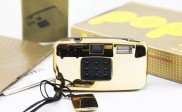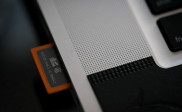Advantages of Shooting RAW
What is Raw?
The RAW format keeps many DSLR users wondering what it is all about when they browse their camera’s menu and discover the option among the other image quality choices.
The standard output of digital cameras is usually a JPEG image file. JPEG is a compressed file format developed to reduce file size in order to accommodate more images in memory storage devices, such as a memory card. It is converted from the camera’s RAW image using a ‘lossy’ compression process, which discards all unnecessary data and applies the camera settings that were used at the time when the photo was taken. It is popularly compared to the printed image, which is a final output intended for display and viewing with no further processing in mind.

Photo by Lutz-R. Frank
The RAW file, on the other hand, contains all unprocessed information collected by the image sensor together with the camera settings. The RAW image is likened to the negative in film photography, which is used for producing prints or scanned digital images for viewing on a computer or television screen.
RAW is not a standard format and its availability can vary between camera manufacturers and models. That is why every time a new camera model with RAW capability is released to the market, image editing softwares need to be updated before they can read and process its RAW files.

photo by Lutz-R. Frank
What are the advantages of using Raw?
The RAW file contains more image information than a computer can display on its screen. This gives the editing program more latitude to process the images before a significant decline in quality starts to show, such as during posterization or banding. It can allow corrections of some shooting errors, like exposure to a higher degree compared to that of a JPEG, while maintaining image quality.

Photo by Mr eNil
Third party image processing softwares usually offer more capability and features than the built-in processor of most cameras, so potentially they can produce better quality photos. Post-processing provides better control where the individual needs of important images can be taken into account—something that is difficult to do, especially when shooting at a fast pace.
It is also logical to archive important photographs in RAW format, as they can be reprocessed when software improvements and new processing features come out, or additional skills and techniques are learned.
One big convenience that shooting RAW can give is in setting White Balance. The photographer can practically disregard this setting and focus on more important details while taking photos, as color balance can be adjusted more accurately during post-processing.

Photo by gfpeck
Raw Applications
While RAW can be applied to almost all aspects of photography, there are applications where it is almost indispensable. One is the newly refined technique of HDR imaging — the inherent high dynamic range of RAW images can produce exceptional and dramatic results when used as input to produce tone-mapped images.
As the demand for post-processed images increase, the need to produce highly editable base images also increase. Portrait and fashion photography now requires a high degree of digital retouching, which can only be achieved well with a RAW image.



